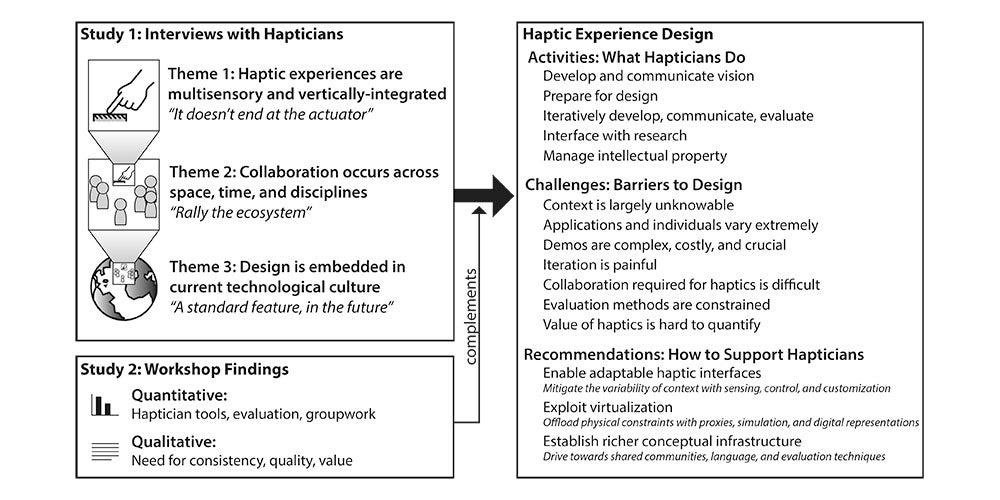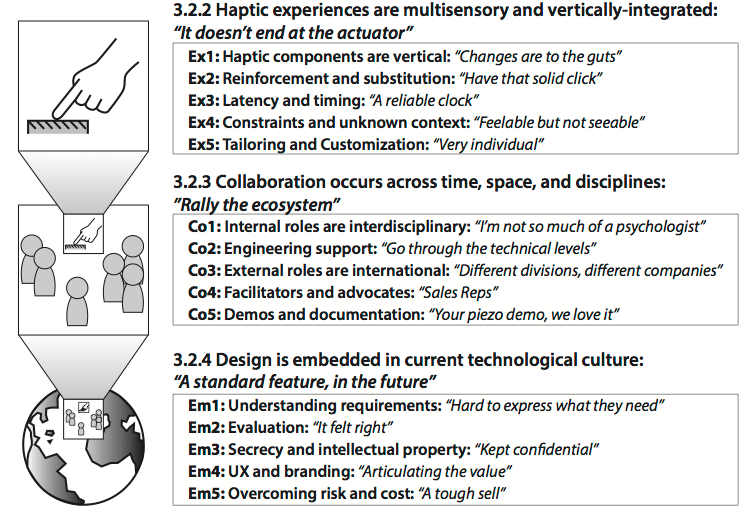
Haptic Experience Design (HaXD), the process of designing for touch, is extremely challenging but poorly understood. We interviewed professional hapticians to develop a first description of HaXD, identify critical barriers to design, and several recommendations for future support tools.
From our research we define HaXD as:
The design (planning, development, and evaluation) of user experiences deliberately connecting interactive technology to one or more perceived senses of touch, possibly as part of a multi-sensory experience.
We also propose that HaXD involves hapticians:
A haptician is one who is skilled at making haptic sensations, technology, or experiences.
We conducted a grounded theory analysis of these interviews, developing three themes each with five sub-themes that describe HaXD.

Haptic experiences are multisensory and vertically-integrated: "It doesn't end at the actuator" Haptic experiences involve touch, vision, and sound, all carefully designed in concert. Because of this, they are vertically-integrated: from hardware to software to the user's background experience, haptics is a cross-cutting concern that requires tight synchronization.
Collaboration occurs across time, space, and disciplines: "Rally the ecosystem" Haptic technology requires a host of skills. From psychology to design to mechanical and electric engineering, a haptician must either fill multiple roles or work with others and bridge gaps of communication. While these teams are distributed, many activities require co-located, synchronous collaboration to be effective.
Design is embedded in current technological culture: "A standard feature, in the future" The value of haptic feedback, while repeatedly shown to be useful, is often fuzzy and hard to describe. Clients don't always know what is possible, how to describe what they want, or even what they want. Combine this with secrecy due to intellectual property concerns and the barriers of iteration and collaboration, hapticians cannot always explain what they can do for clients either. Ultimately, haptics is something that needs to be felt to be understood.